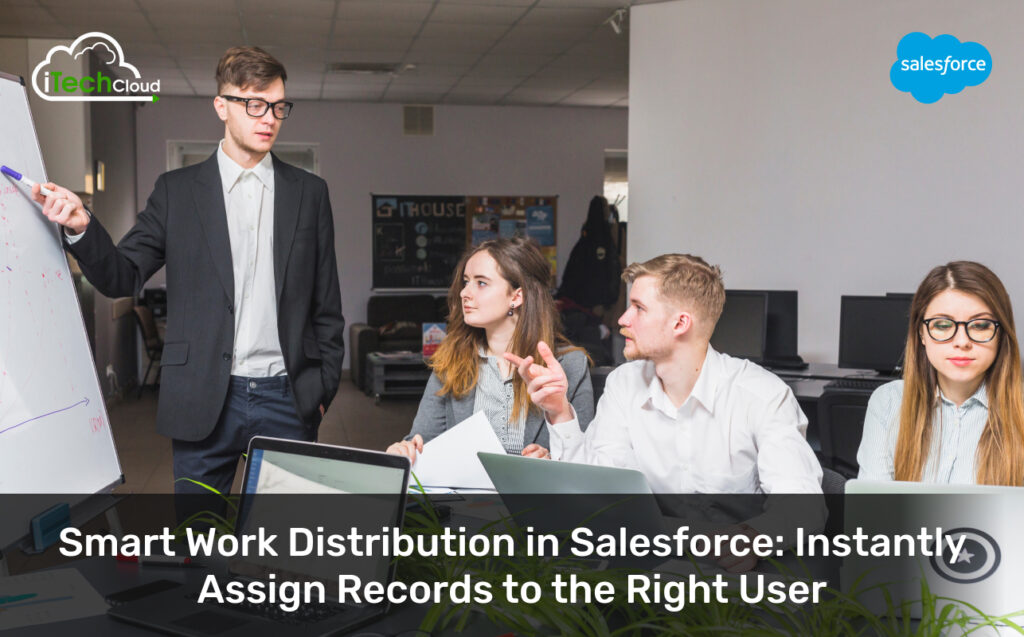Salesforce Round Robin Assignment in 2025

Introduction: Salesforce Round Robin Assignment in 2025
Salesforce continues to dominate the CRM landscape, offering powerful automation tools to streamline business processes. One such critical feature is round robin assignment, a method used to distribute leads, cases, or opportunities evenly among team members. This ensures fairness, maximizes efficiency, and increases productivity.
This comprehensive guide explores Salesforce Round Robin Assignment in 2025, covering its benefits, setup, best practices, and advanced automation techniques. Whether you’re a Salesforce admin, sales manager, or business leader, this blog will help you optimize lead distribution for your team.
Table of Contents
What is round robin assignment in Salesforce?
Round Robin Assignment is an automated lead or case distribution method where records (leads, cases, opportunities) are assigned sequentially to a predefined group of users. Instead of manual assignment, Salesforce automatically cycles through team members, ensuring a balanced workload.
Why Use Round Robin Assignment?
- Fair Distribution: Prevents bias and ensures equal opportunity for all team members.
- Increased Efficiency: Automates manual assignment, saving time.
- Improved Response Times: Ensures leads are assigned quickly, enhancing customer experience.
- Scalability: Works seamlessly for growing teams.
How Round Robin Assignment Works in Salesforce (2025 Updates)
Salesforce has evolved its round robin capabilities with Einstein AI, flow enhancements, and custom metadata types, making it more flexible and powerful in 2025.
Key Components:
- Assignment Rules: Define criteria for automatic record assignment.
- Queues: Hold records before assignment.
- Flows (Cloud Flow Designer): Automate round robin logic.
- Apex Triggers (Optional): For complex custom logic.
- Einstein AI (Optional): Predictive lead scoring before assignment.
Setting Up Round Robin Assignment in Salesforce (2025)
Method 1: Using Salesforce Flows (Recommended)
Salesforce Flows now offer low-code automation, making Round Robin setup easier.
Steps:
1. Create a queue (if not already set up).
- Setup > Queues > New.
2. Build a Record-Triggered Flow:
- Setup > Flows > New Flow > Record-Triggered Flow.
- Choose the object (lead, case, etc.).
3. Add Round Robin Logic:
- Use a Get Records element to fetch active team members.
- Use a loop element to cycle through users.
- Assign records using Update Records.
4. Activate the Flow.
Method 2: Using Custom Metadata & Apex (Advanced)
For more control, use custom metadata types to store team members and an Apex trigger for assignment.
Steps:
- Create a custom metadata type (e.g., “Round_Robin_Team__mdt”).
- Store user IDs in metadata.
- Write an Apex Trigger to fetch and assign records.
- Deploy the trigger.
Method 3: Using AppExchange Solutions
Several managed packages (e.g., Lead Assign, Round Robin Genius) provide plug-and-play solutions.
Best Practices for Round Robin in 2025
1. Dynamic Team Assignment
- Use Einstein AI to adjust assignments based on workload.
2. Prioritize High-Value Leads
- Integrate lead scoring before Round Robin.
3. Fallback Mechanisms
- If a user is unavailable, reroute leads automatically.
4. Real-Time Monitoring
- Use Salesforce Dashboards to track assignment fairness.
5. Hybrid Assignment Models
- Combine Round Robin with territory-based assignment.
Advanced Round Robin Techniques (2025)
1. AI-Powered Round Robin
- Einstein Lead Scoring prioritizes leads before assignment.
- Predictive Routing assigns leads based on past performance.
2. Omnichannel Round Robin
- Works across chat, email, and phone channels.
- Integrates with Service Cloud & Digital Engagement.
3. Weighted Round Robin
- Assigns more leads to top performers.
- Uses custom metadata & Apex for logic.
4. Global Round Robin
- Supports multi-timezone teams with shift-based routing.
Common Challenges & Solutions

The Future and Trends for Salesforce Round Robin (Beyond 2025)
1. AI-Driven Dynamic Routing
- Real-time adjustments based on agent availability and skills.
2. Blockchain for Transparent Assignment
- Immutable logs for fairness verification.
3. Voice-Activated Assignment
- Using Salesforce Einstein Voice for hands-free routing.
4. High Predictive Analytics
- AI predicts the best agent for each lead.
My Takeaway:
Salesforce Round Robin Assignment in 2025 is smarter, faster, and more customizable than ever. With Flows, AI, and automation, businesses can ensure fair lead distribution, boost productivity, and enhance customer satisfaction.
By implementing best practices and leveraging Einstein AI and advanced Apex logic, organizations can stay ahead in lead management. Whether you’re a small business or an enterprise, mastering Round Robin in Salesforce will give you a competitive edge.





